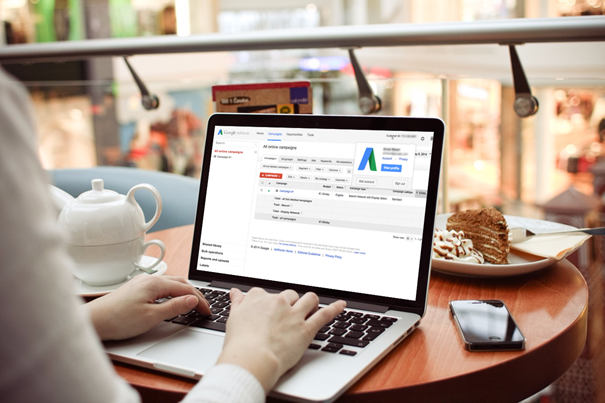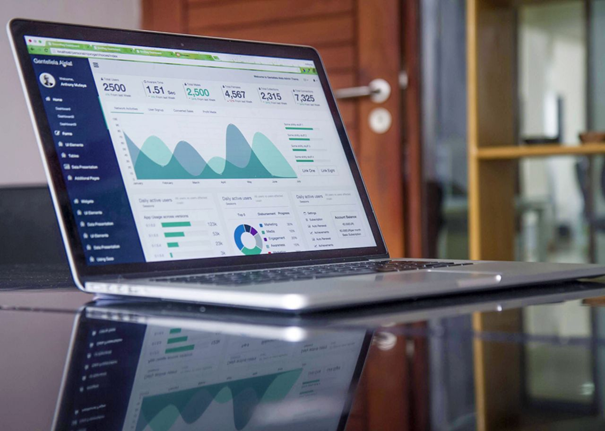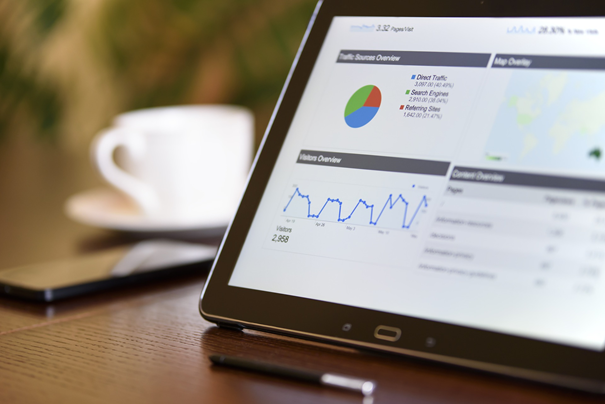SEO
Free SEO Analysis
SEO Services
Content Marketing Services
Local SEO
Link Building Services
Specialized SEO Services
PPC
REPUTATION MANAGEMENT
Free Reputation Management Analysis
Reputation Management Services
Review Management Services
Specialized Reputation Management Services
CEO Reputation Management
Brand Enhancement
Business and Directory Listings
Comprehensive Reputation Management Audit
SOCIAL MEDIA
Free Social Media Analysis
Specialized Social Services
WEB DEVELOPMENT
Free Website Analysis
Web Design Services
Mobile Development Services
Website Maintenance Services
Specialized Development Services
MARKETING AUTOMATION
Free Marketing Automation Analysis
Specialized Marketing Automation Services
Comprehensive Marketing Automation
INDUSTRIES
ABOUT DMA
PPC
8 Top Tools and Tricks to Help You Optimize Your Google Ads Campaign
Request a quote
Its Fast, Easy & Free
Executive Summary
- Optimizing your Google Ads campaign is easier said than done, but that doesn’t mean it’s so complex that it’s impossible.
- You need to regularly measure the results and optimize your campaign accordingly, so that you can be sure that your efforts are actually paying off.
- Keywords are the foundation of your Google Ads campaign, so you need to make sure that you use the right ones.

Every year, companies invest a lot of money into their Google Ads campaigns, trying to reach out to their target audiences and boost interest in their offerings. The best indicator of the amount of money people spend on their Google Ads campaigns is the income that Google makes, as about 90% of Google’s revenue comes from advertising.
It’s not a secret that Google profits from all the paid ads, but are you generating any revenue from yours?
It’s easy to create an Google Ads campaign, since all you need to do is set up an account, enter your credit card information, select the keywords you want to target, and create an ad copy. However, in order to create an effective Google Ads campaign, you need to do a bit more. You need to regularly measure the results and optimize your campaign accordingly, so that you can be sure that your efforts are actually paying off.
Optimizing your Google Ads campaign is easier said than done, but that doesn’t mean it’s so complex that it’s impossible. Once you get the hang of it, you’ll be able to reap actual rewards from your campaigns, so read on to dive into all the steps to help you get started. By the time you’ve finished this, you will know exactly how to get yourself on the right track to success.
Clearly Define Your Targets

This is an important step in every successful Google Ads optimization process because, if you don’t have clearly defined targets, you cannot properly optimize your ads. Only when you define your targets can you match your ads, your ad group, your keywords, and your entire campaign to them. Only then will you be able to make proper comparisons and see which direction to take to make your optimization effective.
Link Your Google Ads Account with Google Analytics

Why should you link your Google Ads account with Google Analytics? Because it is the best way to see exactly how your campaign is performing, since you can check your CTR (click-through rate), bounce rate, conversions, the time people spend on your website after clicking on your ads, and many more metrics that will help you gain a better insight into the performance of your campaign. First, you need to make sure that you enable destination URL auto-tagging in your Google Ads settings, the option that you will find under Account Settings > Preferences, where all you need to do is check the designated box.
After doing that, go to your Google Analytics account and, under Product Linking, you will find the option Google Ads Linking, where all you need to do is select the proper Google Ads account that you want to link with your Google Analytics account. Once you do this, you will be able to see all the data from your Google Ads campaign in your Google Analytics reports.
After linking your Google Ads account with Google Analytics, you should segment your keywords and specify conversion types. You can do both in Google Ads as well, but Google Analytics provides more excellent tools for keeping track of the performance of your keywords and viewing actionable conversion reports.
For instance, you can segment your keywords to see how well your long-tail keywords are performing against short-tail ones. You can also group them into different categories, such as branded and non-branded, for instance.
When it comes to conversions, you can specify both macro and micro conversions and segment specific conversion types into detailed reports, which will give you an excellent insight into your conversions. There is plenty of more stuff you can do in Google Analytics when it comes to your Google Ads campaigns, which is precisely why you should harness its power and use it to your advantage.
Learn How to Identify Sources of Potential Problems

This is the absolute key to every successful Google Ads optimization process because, if you are not able to clearly identify sources of potential problems, how are you going to solve them? You need to know exactly what causes your money to go down the drain, so that you can effectively fix the leak.
For instance, you define your campaign targets to, let’s say, help you generate more conversions, and you set up a cost of $20 for each. After a certain amount of time, you check your AdWords account and, upon taking a closer look at proper metrics, you see that your campaign is generating conversions at a much faster price – let’s say a price that is 340% higher than your target price per conversion.
Most advertisers would simply stop the campaign in question and start planning a new one with a completely different approach and strategy. However, this is something you should never do, because your next campaign may deliver the same negative results. Therefore, you need to get to the core of the problem, so that you can see exactly why your campaign didn’t work the way it should and what you can do to improve it.
What’s often the problem is one or more components of a particular campaign not performing as well as you would like them to perform. Therefore, you should apply different segments in your Google Ads reports and see exactly what the source of the problem is.
For instance, concerning the example above, perhaps it was a particular type of device that brought all the traffic with expensive conversions. In such a case, you know that there is some problem mobile traffic, but you still don’t know why, so don’t stop your campaign just yet.
Given the fact that mobile apps tend to drain quite a lot of money, the next logical step in this particular case would be to check the traffic that you received from mobile apps. You would do this in your placements reports, where you would apply the appropriate filter, which would let you see whether or not all the wasted clicks really came from apps.
Since you have found the source of your problem, you can take proper steps towards resolving it. Therefore, don’t stop your campaign and don’t think that targeting mobile users doesn’t work, but instead go to the Campaign placement exclusions and exclude the placement for apps.
You certainly understand now that locating the source of potential problems is precisely what will help you optimize your AdWords campaigns the right way, because you need to understand what lies behind the numbers. Now that you get this, you can move on to various reports and metrics that will enable you to identify the sources of potential problems for all the important elements of your campaign.
Measure the Results at the Campaign Level

You should always first check the reports that show you the results at the campaign level, and proceed to examining the reports at the ad group level afterwards.
You can start with checking how different devices are performing, just like it was shown in the example above. This will help you see whether or not there is a particular problem regarding all the devices that you target with your ads or perhaps one particular device is causing some problems. In order to figure out, you need to apply the Device segment under the Campaigns tab in your Google Ads .
You can also check if the budget for the campaign is what causes it to fail, that is, if the budget is perhaps insufficient. You can do this by checking the Search Lost IS (budget) column (IS stands for impression share). You can also see the time of day when there is insufficient budget by going to the Dimensions tab and selecting the option Time > Hour of Day.
Once you know exactly when you are lacking budget, you can take one of the two steps for properly optimizing your campaign. You can either reduce your bids for those hours when most of your budget is spent but that do not bring good results, or you can launch a new campaign for those hours that lack budget but happen to be more profitable, so that you can set up a separate budget for them. You can do the same for different days of the week.
If you do not have the ability to increase your budget and you want your ads to be placed on Google throughout the day, without selecting different hours, you should go to your campaign settings and choose the standard delivery method. This is actually the recommended option, as it optimizes the delivery of your ads and enables you to spend your budget evenly over time.
The other delivery method that you can choose from is the accelerated method, which does spend your budget more quickly, but it is a great option if your budget is actually not being spent throughout the whole day. If that is the case and you decide to choose the accelerated delivery method, you can, for instance, increase the bids for particular keywords that Google estimates to be “Below First Page Bid”.
You should also check the Search Lost IS (rank) column, which will show you the percentage of impressions that you lost because of poor ad rank. This will show you which campaigns (if you have launched more than one) are experiencing certain problems with their keywords, so that you can take proper steps for optimizing them.
A/B Test Your Ads

In order to get the most useful results, you should not test your ads before you get at least 100 clicks. However, if you don’t want to wait, you can conduct an A/B Significance Test that will help you figure out whether or not your data has any statistical significance.
Nonetheless, the best way to test your ads and gain a clear insight into their performance, so that you can properly optimize them and turn your campaign into a successful and profitable one, is to conduct split testing, that is, A/B testing. If you A/B test at least two ads per ad group, you will make sure that you reach success with your every Google Ads campaign and stay ahead of your competition.
With A/B tests, you can test different versions of your ad copy, you can test long headlines against short ones, you can test different kinds of ad images, and pretty much every other element placed in your ads, so that you can see which versions are performing better than the other and optimize your ads accordingly.
After you conduct tests to measure the performance of your ads, you should go to the Ads tab and apply the Keyword/ Placement segment, because that way you will be able to see whether or not there are some keywords that have a huge effect on your ads or that are way out of the average range. For instance, a particular keyword may lead to a much higher CTR than the average so, in such case, you should put that keyword in a different ad group.
The absolute key when it comes to A/B tests is not to test ads that are quite similar to one another, but rather create ads with completely different sales strategies and split test them. That way, you will see which ads bring you the most benefits, so that you can make better decisions concerning your every Google Ads campaign.
Make Proper Keyword Improvements

Keywords are the foundation of your Google Ads campaign, so you need to make sure that you use the right ones. Before launching your campaign, you certainly conducted keyword research in order to see which keywords your target audience is searching for to find the products or services that you offer. However, if you don’t check their performance on a regular basis, you may lose a lot of money, because you may be driving traffic that doesn’t convert into quality leads.
Therefore, you need to check your CTR regularly, because it is exactly what affects your Quality Score in Google Ads . If your Quality Score is high, your ads will be served more often, they will be served at better positions, and your CPC (cost per click) will be lower. Why is CTR so important? Because Google will simply not serve your ads as often as you would like if those ads have low CTR, that is, if they don’t make Google any money. Therefore, check the performance of your keywords regularly, so that you can make proper adjustments and increase or decrease your bids accordingly.
What can negatively affect your entire campaign are negative keywords. Those are terms and phrases that don’t really have much or anything to do with what you are offering so, if your ads include them, they would not appear in search results in front of the right people that you want to target.
For instance, if you offer very cheap or even some free products, one of your negative keywords should be “expensive”. If you don’t add a list of negative keywords, you may end up targeting customers who are not really interested in what you have to offer, so your money would eventually go down the drain. A list of negative keywords will serve as a guarantee that you will not pay for the searches containing those negatives, that is, for the searches that have nothing to do with your business.
Implement Location Improvements

First of all, including location extensions will help you attract a lot more people interested in your ads, because your ads will contain information that your target customers may find extremely relevant, such as your phone number, address, and business hours, for instance. If you add that information in your ads, your target customers will find you on Google Maps much easier and faster.
Why use an extension for leaving your phone number? Because Google will place a call button right next to your ad, so that anyone interested in what you offer will be able to instantly call you. If you set your business hours, that call button will not be displayed when you are closed.
In order to let Google display your phone number next to your ad, you need to go to the Ad Extensions tab and select the option for call extensions. Enter your phone number in the designated box and then choose whether you want to use a Google forwarding phone number with call reporting or use your own phone number without call reporting.
When it comes to Google Ads location targeting, you can also use radius targeting, in case you want to target a group of people located in a specific physical location. That way, your campaign will be more focused and you will not waste your efforts, not to mention your money, on targeting people who will not be interested in your products or services.
Optimize Your Ads for Mobile

Since mobile use is at its peak, it goes without saying that you need to make sure that you optimize your Google Ads campaign for mobile devices. Given the small screen size of mobile devices, you should make sure your ad copies are concise, so that you can immediately give your target customers what they want. Therefore, avoid long-tail keywords when creating dedicated mobile ads.
What’s incredibly important is to make sure that your landing pages are optimized for mobile devices as well because, if they are not mobile-friendly, there’s really no point in targeting mobile users whom you will not provide with great user experiences when they click through and come to check the offer from your ad on your website.
What quite a lot of online marketers fail to do, but you definitely should, is exclude mobile apps from your Google Ads campaign. The most important reason why you should do this is the fact that kids nowadays spend most of their time playing games on mobile phones. This means that, more often than not, kids will click on your ads rather than close them, which will make you waste quite a lot of money.
Therefore, make sure you go to the targeting options in your Google Ads and simply exclude mobile apps from your campaign.
Google Ads can be a very complicated platform for beginners so, if you are one, all of the aforementioned tips are certainly very helpful. There is much more stuff that you can do in Google Ads in order to optimize your campaign, but these tips are definitely more than enough to give you a sense of direction and help you generate sales and revenue with your ads.
All of this should help you better understand Google Ads and the ways you can use it to attract quality leads, but make sure you delve deeper into the matter and learn about all the other bits and pieces that make this platform the best possible one for serving ads and targeting the right people who will essentially help you grow your brand.
Our Sales team